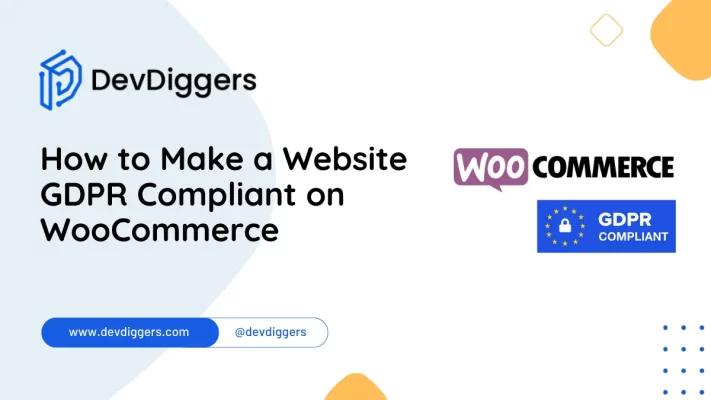Ecommerce Branding Strategies: The Road to Recognition

In the digital world, having a solid online presence is crucial for businesses to attract customers and stay ahead of the competition. One key factor in achieving online visibility is implementing effective eCommerce branding strategies and modern eCommerce platform techniques.
Think about Apple. The sleek design, innovative technology, and customer-centric approach have made them stand out in the competitive tech market. Customers recognize and associate the Apple logo with premium quality and cutting-edge products, leading to repeat purchases and brand loyalty.
By embracing eCommerce branding and employing impactful content creation strategies, businesses can effectively connect with their target audience, boost their visibility, and drive growth in the competitive online marketplace.
Table of Contents
What is Ecommerce branding, and Why is it needed?
First, before diving into how to, let us ask why. eCommerce branding is about creating a unique identity for your business and products. It involves crafting a consistent and memorable brand image that resonates with your target customers.
1. Enhancing Brand Recognition and Recall
If you think about brands like Adidas or Coca-Cola, their logos instantly come to mind, or some good old advertisement still lingers. Consistency in branding elements across your website, social media, and packaging creates a memorable impression.
Effective eCommerce branding helps your target audience easily recognize and remember your brand. When customers encounter your logo, colors, or tagline, it triggers familiarity and trust.
2. Building Trust and Credibility with Customers
Trust is crucial in eCommerce. When customers trust your brand, they feel more confident in making purchases. Employing customer testimonials and reviews on your website can also boost trust and encourage conversions.
3. Differentiating Your Brand from Competitors
Branding sets you apart in a competitive and highly crowded eCommerce landscape. It highlights what makes your products or services unique and why customers should choose you over others.
Your brand personality, messaging, and visual elements should align with your target audience’s preferences and resonate with their needs and aspirations.
4. Increasing Customer Loyalty and Repeat Purchases
A well-defined brand fosters customer loyalty and encourages repeat business. Customers who face a positive experience with your brand are likelier to become loyal advocates who recommend your products to others.
Loyal customers also have a higher lifetime value, as they are more inclined to make repeat purchases and engage with your brand long-term.
D2C (Direct-to-Consumer) Ecommerce Branding
D2C (Direct-to-Consumer) eCommerce has become a popular approach in eCommerce branding for online businesses to connect directly with customers without intermediaries. Brands increasingly turn to a direct-to-consumer (D2C) business model through mobile and digital channels.
Buying local trends is going faster as a factor that influences brand decisions. Now, we will explore the concept of D2C eCommerce, its business advantages, and strategies for effective D2C branding.
D2C eCommerce refers to selling products or services directly to consumers, bypassing traditional distribution channels. By eliminating intermediaries, businesses can establish a direct relationship with their customers, gaining valuable insights and control over the customer experience.
This eCommerce branding allows companies to understand their target audience better, personalize their offerings, and build stronger customer relationships.
Advantages and strategies of D2C branding
One of the critical advantages of D2C branding is its ability to have greater control over the brand image and messaging. Businesses can directly communicate their brand values, stories, and unique selling points without relying on third-party retailers. This favors brand recognition, loyalty, and trust among consumers.
Strategies for effective D2C eCommerce branding involve creating a strong brand identity, developing compelling brand messaging, encouraging user-generated content, and using digital marketing channels, employing data-driven decisions and platforms to reach out and engage with the target audience.
This includes optimizing website content with relevant keywords, implementing effective SEO strategies, using social media platforms, and creating compelling and informative content that resonates with the target audience.
To illustrate the potential of D2C branding, let us look at some successful case studies. Examples include companies like Warby Parker, an eyewear brand that disrupted the industry by directly offering stylish and affordable glasses to consumers online.
Another example is Dollar Shave Club, which revolutionized the shaving industry by delivering high-quality razors and grooming products directly to customers’ doors through a subscription-based model.
By understanding the concept of D2C eCommerce, recognizing its advantages, and implementing effective branding strategies, businesses can unlock new growth opportunities and establish a direct and meaningful connection with their target audience.
Ecommerce Branding Strategies on WooCommerce
First, let us understand what WooCommerce is. WooCommerce is a commonly used eCommerce plugin for WordPress websites.
It enables eCommerce businesses to set up and manage their online stores easily. With its user-friendly interface and extensive features, WooCommerce is becoming increasingly popular.
Commonly Used Ecommerce Branding Strategies on WooCommerce
Some key strategies that can be implemented to leverage its use for effective branding are as follows:
- Customize design elements: The first step in creating a powerful online presence is to customize the design elements of your website, including creating compelling product descriptions, high-quality product images, and consistent branding elements, such as logos and packaging.
- Brand your products: Another essential aspect of WooCommerce branding is to ensure that your products are appropriately branded. This includes adding high-quality product images, writing compelling product descriptions, and using consistent branding across all product pages. For instance, if you sell handmade jewelry, you can showcase each piece’s craftsmanship and unique features through detailed descriptions and captivating visuals.
- Search engine optimization (SEO) optimization: To optimize your WooCommerce website for SEO, ensure your website is mobile-friendly, use descriptive URLs, include relevant keywords in the product descriptions, and use meta tags and descriptions. An example is the Yoast SEO plugin, which allows you to optimize your product pages by adding meta titles, descriptions, and keywords.
- Using plugins or extensions for enhanced functionality: WooCommerce offers a wide variety of plugins to improve the functionality of your website. This includes plugins for social media integration, email marketing, and customer reviews.
- Enhance user experience: Ensuring that the website is easy to navigate, provides clear and concise product information, offers multiple payment options, and provides excellent customer support aids in improving the user experience.
So, whether you are a small business owner or an aspiring entrepreneur, WooCommerce can be the perfect platform to establish and grow your online presence.
Start exploring its features and unleash the power of eCommerce branding to make your WooCommerce store truly stand out in the digital landscape.
Influencer Marketing for Ecommerce Branding Strategy

Suppose you have an eCommerce store selling fashion and clothing products. You identify a prominent fashion blogger on Instagram with a significant following and high engagement. Collaborate with them on a sponsored post, showcasing and reviewing your products.
They provide an honest opinion and a unique promo code for their followers to use on your website for a specific discount. This collaboration generates interest and drives conversions, enhancing your brand’s visibility and attracting new customers.
It generates user-generated content (UGC) (the reels or maybe the sponsored posts you see across different social media platforms), which is a valuable asset for your brand.
Identify Relevant Influencers in Your Niche:
Using tools like BuzzSumo, Hootsuite, or Social Blade, you can find influencers with a significant following on platforms like Instagram, YouTube, or TikTok.
Look for influencers whose values align with your brand’s identity and who have an engaged audience that matches your target market.
Collaborating with Influencers to Promote Your Brand
Reach out to them and discuss potential collaboration opportunities such as sponsored posts, product reviews, or giveaways.
Establish clear goals and expectations for the collaboration, ensuring the influencer’s content resonates with your brand’s messaging and effectively showcases your products or services.
Measure the Success Metrics of Your Influencer Marketing Campaigns
Keep track of critical metrics such as engagement, click-through, and conversion rates. Use tools like Google Analytics or social media analytics to monitor the performance of your campaigns and make data-driven decisions to optimize your strategy.
For example, if you notice high engagement rates but low conversion rates, you may need to refine your call-to-action or landing page to improve the conversion process.
Tracking and Analyzing the Ecommerce Brand Performance

By using analytics tools and diving deep into data insights, businesses can gain valuable information about their brand visibility, customer behavior, and the overall effectiveness of their eCommerce branding strategies.
Utilizing Analytics Tools to Monitor Brand Visibility and Reach
Analytics tools such as Google Analytics provide valuable insights into website traffic, user engagement, and the overall performance of your eCommerce brand.
For example, tracking the number of unique visitors, page views, and bounce rates can clearly show how well your brand attracts and retains online users.
Analyzing Website Traffic, Conversion Rates, and Customer Behavior
An in-depth website traffic analysis and customer behavior are crucial in understanding eCommerce branding strategies. By examining conversion rates, you can determine how successful your brand is in driving sales.
Additionally, analyzing customer behavior, such as the average time spent on the website, click-through rates, and cart abandonment rates, can provide insights into potential pain points or areas where your brand can improve the overall user experience.
Optimizing Ecommerce Branding Strategies Based on Data Insights
Data-driven decision-making allows you to optimize your branding strategies for better results. You can identify what resonates most with your target audience by analyzing the performance of various branding elements, such as website design, messaging, and visual content.
For example, by analyzing user engagement metrics like time spent on specific pages or click-through rates on different elements, you can determine which aspects are most effective in capturing the attention and interest of your customers.
Measuring the Return on Investment (ROI) of Branding Initiatives
Measuring the ROI of your branding initiatives is essential in determining the effectiveness of your investments for that particular eCommerce product.
You can evaluate the financial impact of your branding efforts by tracking key performance indicators (KPIs) such as sales revenue, customer acquisition costs, and customer lifetime value.
For instance, if you run an eCommerce branding campaign on social media platforms, you can keep track of the conversions or sales generated from that specific campaign and compare it to the cost incurred.
Ride on the Wave of Trends
Ecommerce branding strategies continuously evolve, and keeping up with these latest trends is crucial for success, with the boom in social media platforms like Instagram and Facebook offering seamless shopping experiences.
Brands capitalize on this trend by integrating shopping features and engaging with customers directly on social media. Personalization, influencer marketing, sustainability, and omnichannel integration also drive eCommerce branding strategies.
Customized experiences, collaborations with influencers, ethical practices, and seamless multi-channel experiences captivate today’s consumers.
Remember, the buy button is just the beginning of eCommerce branding strategies. It is the sprinkle of masala on the pani puri and the extra cheese on the pizza—creating unforgettable experiences that leave a lasting impression, making customers crave more!




